Hans Simon was the Lutheran pastor of the Zionskirche. He wore a turtleneck jumper and always had a pipe in his hand. The Stasi spied on his every move.
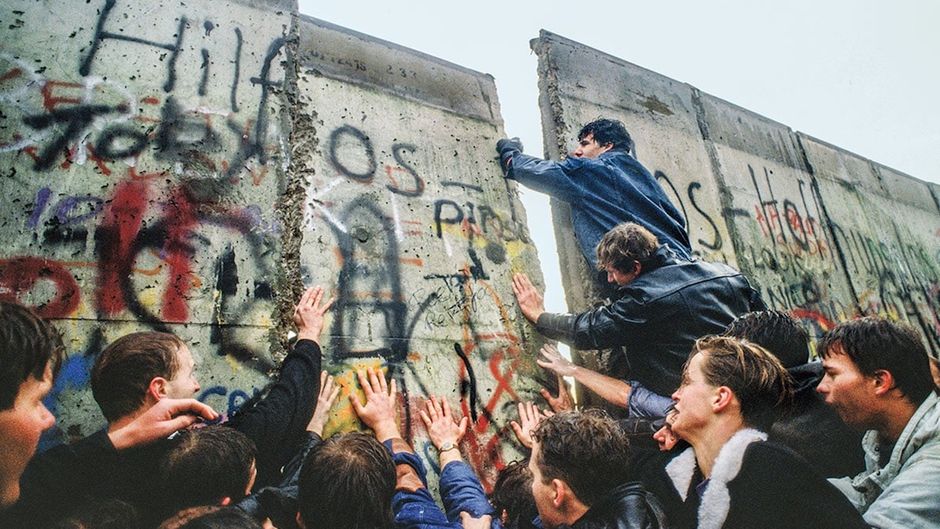 In 1961 the Berlin Wall was built, marking the division between East and West during the Cold War until 1990.
In 1961 the Berlin Wall was built, marking the division between East and West during the Cold War until 1990.
There is currently an exhibition in Madrid on "The Berlin Wall" as a sign of "A World Divided".
I went to the exhibition with family and friends right about the same time I started reading David Granda's book, Plans to Conquer Berlin, about the Protestant church that housed East German dissidents.
Zionskirche is where Bonhoeffer was a catechist, who suffered a neo-Nazi attack during an underground concert in 1987, under the indifferent gaze of the communist regime's police.
After World War II, the western sector of the former German capital was an occupied city whose sovereignty lied in the hands of the United States, France, and the United Kingdom.
In 1961, the Wall was built to mark the division between East and West during the "Cold War". It was built under the initiative of the German Democratic Republic (DDR), after four million of its citizens had fled to the western part of the Federal Republic of Germany (FRD) since 1949.
The communist regime's sentinels had daily orders to "arrest or annihilate violators attempting to breach the border" that marked the "anti-fascist protection wall".
The city was military territory until 3 October 1990. In a sense, the war ended on that day with the signing of the capitulation of the German state created by the Soviet occupation, and its annexation to the Federal Republic, known as "reunification".
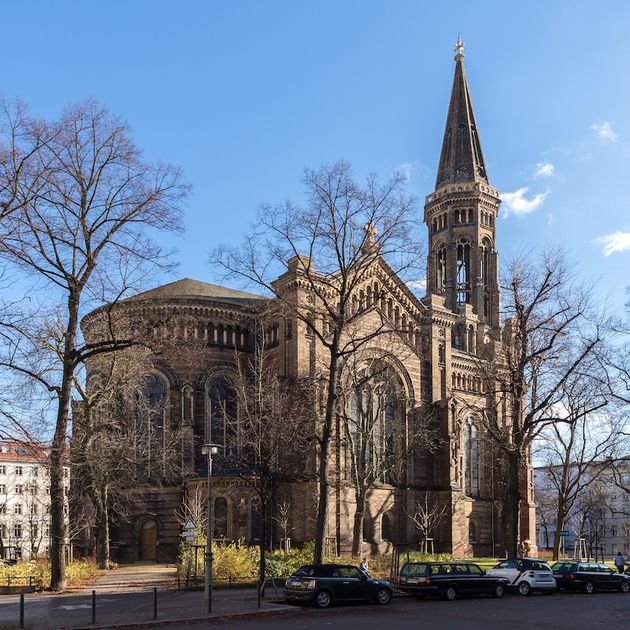
The FRD did not even change its name, even if we now call it simply Germany. Founded in 1949, it established the political power in Bonn, the financial power in Frankfurt, the business power in Düsseldorf and the commercial power in Hamburg.
The former capital of the Reich went from four and a half million to one and a half million inhabitants at the end of the 1980s, but it became one of the most important cultural centres of the European artistic avant-garde to this day.
The Lutheran Zionskirche stands on the exact spot where the Berlin Wall opened in the heart of the counter-cultural district of Prenzlauer Berg.
It was erected in 1873 with its 67-metre-high bell tower with the first emperor of the unified Germany and the Prussian Chancellor Bismarck. It is like a large, open, industrial-looking hall with soaring ceilings, like the hangar of a zeppelin. It can seat up to 1,424 people.
In the 1930s, the Lutheran theologian Dietrich Bonhoeffer, who died naked on the gallows of the Nazi concentration camp at Flossenbürg, accused of participating in a plot against Hitler, was a catechist in this church.
During the war, an incendiary bomb destroyed the roof and windows of the church choir during the final Allied offensive. After the war, Berliners ransacked the church in search of firewood for warmth.
The facades of the neighbourhood's buildings were left bare without plaster filigree, and the balconies were smashed to the ground. You can still read the letters 'LSR' painted on the walls, which led with a fluorescent arrow to the air-raid shelters.
[destacate]In the 1930s, the Lutheran theologian Dietrich Bonhoeffer, who died naked on the Nazi concentration camp at Flossenbürg, accused of participating in a plot against Hitler, was a catechist in the Zionskirche[/destacate] The legacy of Bonhoeffer's work was later disputed by opposing sectors of Protestantism. On the one hand, Georg Huntemann sees him as an evangelical theologian rooted in the pietistic tradition -which now leads Americans like Eric Metaxas to link him even to "Trumpism"-, while the radical "death of God" view of the 1960s sees him as a pioneer of the "secular theology" of an unchurched Christianity.
All is possible based on speculation about his prison writings, which reveal a truncated work. His Ethics is unfinished because he was unable to develop his thought, dying so young.
And what he writes in the darkness of his cell is in the language of pain, not the comfortable reflection from the professor's office in his "ivory tower".
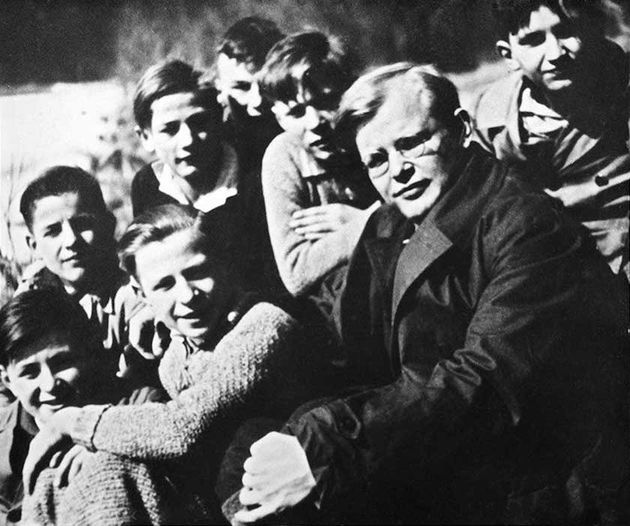
Germany has suffered from "the shadow of nazism" ever since. Other countries in the East were even more anti-Semitic than Hitler, but someone must be "the scapegoat" and Germanic culture is held responsible for the madness of the Holocaust.
The glorious exception of the Confessing Church has around Barth and Bonhoeffer a certain pietistic heritage, but the radical theology and politics of the 1960s lead the Lutheran church to a stance that goes beyond its traditional ally, the Social Democratic party -until Angela Merkel, the Christian Democratic party was generally Catholic, and her father was a Lutheran pastor in the East, not in the Federal Republic of Germany-.
Thus, a Barthian pastor like Helmut Ensslin, a member of the Confessing Church, is reproached by his daughter Gudrun for having been in the Nazi army.
She marries Bernward Vesper, the son of a Nazi writer who had tried to maintain Christianity in opposition to Goebbels' neo-paganism. Together they devote themselves to literature and publish a bilingual edition of Gerardo Diego's poetry, as well as radical left-wing political texts.
Together with her lover Andreas Baader, she founds the Red Army Faction (RAF) -better known as Baader-Meinhof-. Arrested for her terrorist activity, which led to the deaths of four people, she was sentenced to life imprisonment.
In Stammheim prison she confronts Meinhof, who commits suicide after her, together with other members of the gang.
The father does not approve of his daughter's violence but understands the reasons for her struggle. The son she had with Vesper, Felix, later became a Doctor of Philosophy; his thesis was about Luther's self-consciousness in his commentary on Romans and the Magnificat.
His godfather was the murdered anarchist Rudi Dutschke. As shown on The Baader Meinhof Complex (2008), a film by the creator of Downfall, it all begins with a protest against the visit of the Shah, when what was to come in '79 was Khomeini's Islamic Revolution.
These are the paradoxes of the left.
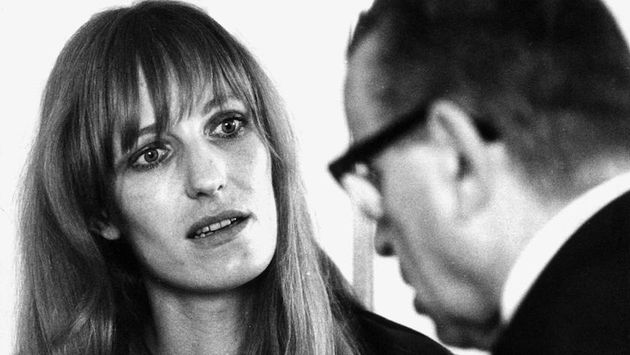
[photo_footer] Gudrun, daughter of Barthian pastor Helmut Ensslin, a member of the Confessing Church, is one of the founders of the Baader-Meinhof terrorist group. [/photo_footer]
In Eurocommunism, theorists like Toni Negri advocate for terrorism in Italy to overthrow the capitalist state. Leonardo Sciascia remembers him walking along the train being careful not to trip over a suitcase that might have an explosive in it.
In Spain, on the recent anniversary of Carrero Blanco's assassination, it has been recalled that it was Eva Forest -married to the playwright Alfonso Sastre- who gave Argala -from terrorist group ETA- the information to kill the president.
It is hard today to understand the extremism of speeches like those of Gudrun Ensslin, reproaching theologians for "waiting". She accuses her father, the pastor, of "talking, but doing nothing", although first her mother and then her father have only words of understanding for her.
What is clear is that, for many young people in western Germany in the 1970s, the Lutheran discourse had become empty.
Since the 1978 agreements between Erich Honecker and the Lutheran Church -known as Kirche im Sozialismus, the Church in Socialism-, the Eastern state recognised the autonomy of parishes.
[destacate] For many young people in western Germany in the 1970s, the Lutheran discourse had become empty [/destacate] Freedom of expression in religious matters was thus tolerated, although, as Granda says, "in return, (it was) expected that church leaders would control their flock".
The Stasi -the Ministry of State Security, which served as the German Democratic Republic's intelligence agency- devoted an entire department -XX4- to infiltrate the churches.
The Lutheran pastor of the Zionskirche was called Hans Simon and was born in the Prussian town of Kayna. He had three daughters and a neatly trimmed beard.
He wore a turtleneck jumper and always had a pipe in his hand, for he smoked compulsively, although cigarettes were forbidden in the church. He was so interested in psychoanalysis that his wife, Bärbel, told him that his sermons sounded like lectures on Freud. The Stasi spied on his every move.
On the ground floor of the parsonage at 16 Griebenowstrasse was the main dissident meeting place in East Berlin. It was the Umweltbibliothek -the Environmental Library-. It was the only independent printing house in the German Democratic Republic, which published an environmental gazette and a human rights gazette.
They were apparently legal because they were printed on church-issued stamped paper. On the fourth floor there was a café in the attic, where exhibitions and lectures were held. All under the protection of the Lutheran church.
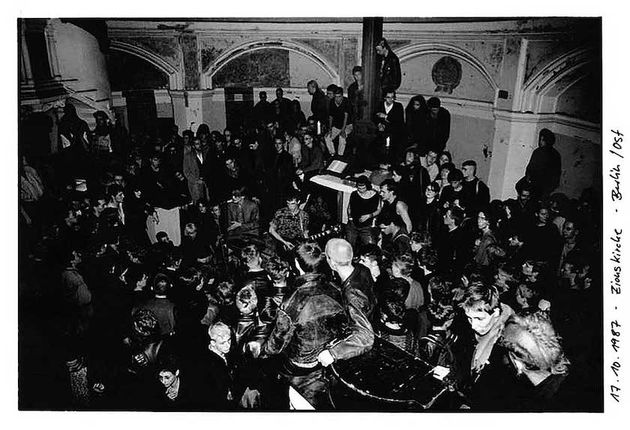
For the concert on 17 October 1987, Pastor Simon had to seek permission from the church council, which declared it a "prayer service with music".
[destacate]The Ministry of State Security, which served as the German Democratic Republic's intelligence agency, devoted an entire department -XX4- to infiltrate the churches[/destacate] The band that was to play from East Berlin was called Die Firma -the name by which the Stasi were known-. The guitarist, Paul Landers, later formed Rammstein; the other guitarist, Richard Kruspe, and the drummer, Christoph Schneider, also joined it.
The guest band from the West was Element of Crime. In order to cross into the DDR, they had to do so without instruments, concealing their intentions. They wore a day pass as tourists and used Die Firma's sound system.
Landers tells Granda that the alternative audience in the East was not used to applauding, as people were forced to do so at Party rallies. They considered it an act of propaganda.
Rammstein's current guitarist also had another band called Feeling B. It was the first alternative band in the East to be formed. It was the first alternative band from the East to get a contract with the state-owned record monopoly company, Amiga.
The band was formed the year the Stasi chief had ordered a brutal crackdown in 1983. In '87, Landers was doing his military service with the border guards.
Die Firma had Einstufung -permission to perform in public granted by a cultural court after an audition- but could not record or publish their music.
Element of Crime had just made a record in London with John Cale, the legendary Welsh musician from Andy Warhol's New York-based band Velvet Underground.
Their singer and trumpet player, Sven Regener, began the concert with the album's opening track, meaningfully titled No God Anymore. It wasn't really punk. It was more like mid-tempo songs. Regener is now a writer as well as a jazz musician.
The band stood in the chancel -as can be seen in the only photo of the concert- with an open Bible behind them. Some of the audiences are standing in the pulpit or sitting on the steps leading up to it.
In the apse, there is a huge Protestant cross, i.e. without the figure of Christ crucified, on which two people are climbing. At the base there is one smoking. Erik Weiss took the picture, perched on the organ console, next to one who had half his skull shaved off. Regener is seen next to the microphone and to guitarist Jacob Ilja.
A couple of kilometres away from the church there was a bar called Sputnik. A group of about seventy skinheads gathered there. Many of them were hooligans of Dynamo, the Stasi's favourite club, which was the most hated club in East Germany.
According to Erich Mielke, head of the security service from 1957 to 1989, there were no right-wing extremist groups in the DDR. The leader of this non-existent reality was Ronny Busse, a paper carrier who admired Hitler. He was 22 years old and had spent three months in prison for vandalism.
If there was one thing in the DDR, it was work. In fact, it was compulsory. Lack of employment was considered anti-social behaviour. Unemployment did not exist.
Rents were low and no one could be evicted from their home. Health care and university education were free. Abortion was free up to the third month and the pill was prescribed. The problem was that everything was programmed, from infancy to retirement.
The German Free Youth was the state organisation to which young people belonged from the age of fourteen until graduation. They had premises and organised concerts and excursions.
They published a magazine called Die Trommel. All for the glory of "socialism". There was no greater protest then than being a neo-Nazi.The concert in the Lutheran church had just ended when the skinheads showed up, theatrically entering the church in a row of two with their right arms raised with Nazi proclamations of "Sieg Heil!" and the typical insult "Pigs!". They carried bottles, bats, knuckle dusters, iron bars and chains.

The amazing thing is that the Volkspolizei -the DDR police, popularly known as Vopo- watched from a safe distance. The officers decided not to intervene. They simply made a call to headquarters and waited for orders, which did not come.
The truth is that almost thirty skinheads confronted more than five hundred people, and when police reinforcements arrived, the square in front of the church was already clear. The trial revealed that many people were injured, some seriously, and all the church furnishings were destroyed.
The phrase that made punk known in England is "There is no future".
The failure of the great ideologies that led to the revolutionary struggle turns in the late 1970s into a nihilism that leads to a frustration that at first expresses itself in hatred and extreme behaviour, but then leads to an exaltation of the ephemeral and the inconsequential.
The Stoics believed that hope is foolish, because anticipating future happiness leaves humanity vulnerable to all sorts of disappointments and disillusionments.Seneca writes that his friend Hecateus told him: "Stop hoping and you will stop being afraid!". Such hopelessness leads to hedonism and stoicism, whereby, as C. S. Lewis puts it, you are no longer "surprised by joy".
How can there be hope without God, if He is the ultimate basis that gives us purpose and a sense of right or wrong, just, or unjust?
In other words, hope depends on truth. If something is true, it is possible. The "Truth" that is Jesus tells us that He is "the Life" (John 14:6). If there is life, there is light.
It is possible to find "The Way" that will lead us from this chaos to a new day where there is not all this sadness. It is that Truth that alone can lead us out of this present darkness and patent weakness into a better future. That is the Christian hope.

Las opiniones vertidas por nuestros colaboradores se realizan a nivel personal, pudiendo coincidir o no con la postura de la dirección de Protestante Digital.
Si quieres comentar o